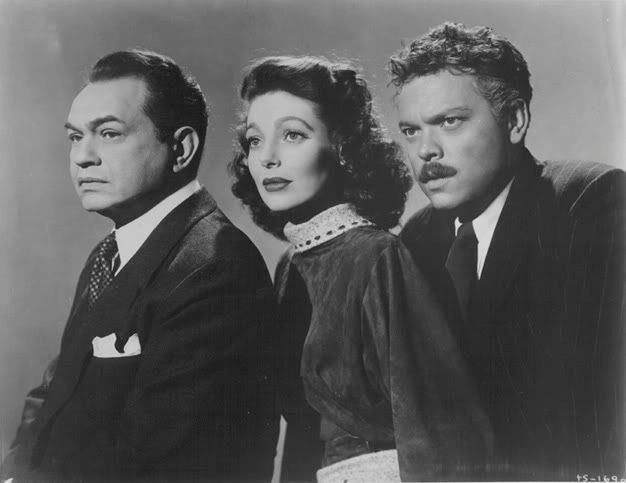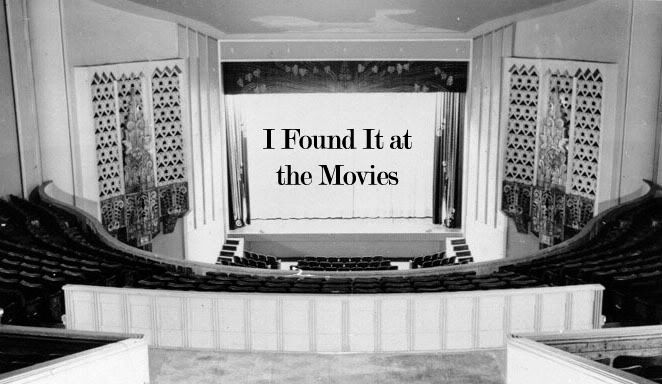
REFLECTIONS ON ORSON WELLES, PT II: THE STRANGER
THE BACKGROUND
Orson Welles had been out of filmmaking for almost three years by the time he came to his next project. With The Magnificent Ambersons butchered, It’s All True sabotaged, and his credibility ruined by RKO Pictures, Welles decided to explore other interests. In those three years, he was highly active in radio and politics, regularly writing columns, making speeches, even ghostwriting for Roosevelt a time or two. And it wasn’t even the studios that came calling in the summer of 1945: it was Sam Spiegel, an independent producer looking to attach Welles as actor and director for his new property, The Stranger. Anthony Veiller and John Huston had written a script called Date with Destiny (Huston had to take his name off the project, since he was still serving in active duty with the U.S. Army), and Spiegel & his producing partner, Bill Goetz, were looking for a director. They decided to take a chance on Welles, a man who was seen in Hollywood as “damaged goods.” This would be a new experience for Welles: he was a hired gun, not having anything directly to do with the writing process, and was being kept on a tight leash by both Spiegel and Goetz. He wasn’t allowed final cut, and had to bring the project in on time and on budget. His initial casting ideas–like having Agnes Moorehead play the Edward G. Robinson role–were shot down. These restrictions notwithstanding, Welles was enthusiastic about the chance to make pure Hollywood product and prove himself as a financial asset, rather than a liability. What’s more, the story of a Nazi masquerading as a history teacher in a quiet Connecticut town certainly appealed to his creative and political concerns. True to his word, he finished the film on time and under budget, and The Stranger became the only film Welles ever directed to turn a profit.
As with any of his projects in Hollywood after Citizen Kane, the editing process withered away Welles’s vision. Before production had even begun, one of Spiegel’s editors cut the script by thirty-two pages. According to the original cutting continuity (found in the Welles archives at the Lilly Library in Bloomington, Indiana), on which scholars James Naremore, Bret Wood, and Simon Callow have done extensive work, the original cut of The Stranger was roughly 115-125 minutes. After Welles delivered his version to Spiegel and Goetz, they proceeded to remove somewhere between 20 and 30 minutes of footage. This consisted of a pre-credits sequence involving the female protagonist, Mary (Loretta Young), having a prophetic nightmare. A complete 10-20 minute chase sequence with Meineke (Konstantin Shayne) going to an Argentine dog kennel before he goes to America was removed. For the rest of the film, a flashback structure showing Charles Rankin’s (Welles) first few weeks in Harper, Connecticut–along with other dream sequences–was removed.
These cuts certainly point to Spiegel and Goetz desiring to streamline the narrative and bring the running time down. As Simon Callow astutely observes in his Welles biography, Hello Americans, the cuts would actually have clarified certain lines spoken by Wilson (Edward G. Robinson), as well as made actions by both Mary and Rankin more organic to their characters. Welles believed those elements were the only visually stimulating images in the whole film (see This is Orson Welles, p. 186), but of course, he couldn’t do anything about it. Once the film was released, it did turn a profit, but the experience made Welles realize that working within the system was no longer a viable creative option. He would make two more films in Hollywood, The Lady from Shanghai for Columbia, and Macbeth for Republic. Then in late July 1947, Welles exiled himself to Europe, not to return to America for nine years.
THE REVIEW
The version of The Stranger found in Welles’s original cutting continuity certainly sounds more gripping than the final cut that exists today. The film has been historically viewed as the least personal and least important finished film in Welles’s career. (This seems true of his Hollywood work; from what I’ve read, The Immortal Story also seems to fit this description.) The narrative–a paranoid thriller centering around a death-camp mastermind (Welles) taking refuge in small-town Connecticut with a U.S. governement agent (Edward G. Robinson) hot on his trail–sounds like a wickedly Expressionist nightmare, quite Wellesian in both its artistic potential and political subtext. It is also Welles's first attempt at making a thriller, to be repeated in The Lady from Shanghai, Mr. Arkadin, Touch of Evil, and The Immortal Story. Indeed, many of the Welles flourishes are here: relaxed long takes, dramatic shadows, eloquent monologues (written by Welles himself). But there are too many narrative gaps to let the whole thing hang together. For instance, why would Wilson (Robinson) be sure that Rankin was in fact the infamous Franz Kindler after their dinner conversation, but then only decide to stay in Harper after he believed Rankin could be linked to Meineke’s (Konstantin Shayne) murder? Also, why would a cold-blooded Nazi all of a sudden feel great remorse for making his wife complicit in his crime, then attempt to kill her, then feel even more remorse for letting her brother die instead of her? The film doesn’t develop Rankin as anything more than a bug-eyed paranoiac, quietly waiting until the Nazis try to take over the world again. Welles’s performance doesn’t help matters, leaving the audience almost bored by his constant physical overacting. Loretta Young as Mary is similarly problematic; she just falls into hysterics a lot, only establishing a firm sense of self at the end, when she goes to the clock tower to kill Rankin. Robinson is the only member of the cast who works within the film; he is cold, but Welles’s camera allows his character to breathe, especially in his scenes with Potter (Billy House), the town clerk. The worst offender is the composer, Branislaw Kaper, whose syrupy score muffles any sense of real dread that might come across otherwise. It leaves one wishing for the gifts of Bernard Hermann, who delivered a masterpiece of film music with Citizen Kane.
Welles called the climax on the clock tower “pure Dick Tracy,” and in a way it is. The final piece of dialogue is far too chipper, and distracts from the gruesome violence that just came before. One gets the impression that many of these complaints could have been solved had the released version been Welles’s, but of course, there is no way of knowing. Unless the cut footage miraculously resurfaces, The Stranger remains a curiosity to Welles fans, with charming stylistic moments injected throughout, but ultimately less his own than even Ambersons, Shanghai, or Mr. Arkadin.


1 comment:
I have been studying about this topic and I think that this blog is very interesting and important thing.
Post a Comment